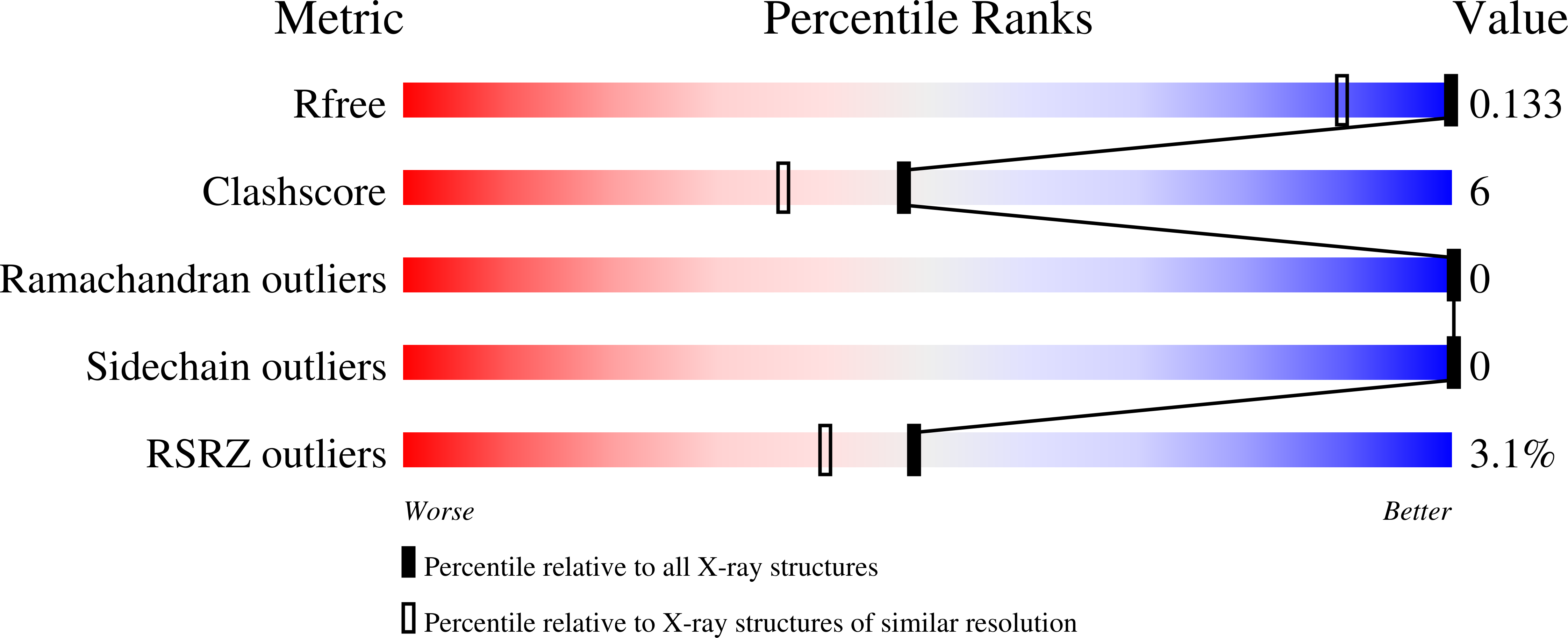Structural insights into protein folding, stability and activity using in vivo perdeuteration of hen egg-white lysozyme.
Ramos, J., Laux, V., Haertlein, M., Boeri Erba, E., McAuley, K.E., Forsyth, V.T., Mossou, E., Larsen, S., Langkilde, A.E.(2021) IUCrJ 8: 372-386
- PubMed: 33953924
- DOI: https://doi.org/10.1107/S2052252521001299
- Primary Citation of Related Structures:
7AVE, 7AVF, 7AVG - PubMed Abstract:
This structural and biophysical study exploited a method of perdeuterating hen egg-white lysozyme based on the expression of insoluble protein in Escherichia coli followed by in-column chemical refolding. This allowed detailed comparisons with perdeuterated lysozyme produced in the yeast Pichia pastoris , as well as with unlabelled lysozyme. Both perdeuterated variants exhibit reduced thermal stability and enzymatic activity in comparison with hydrogenated lysozyme. The thermal stability of refolded perdeuterated lysozyme is 4.9°C lower than that of the perdeuterated variant expressed and secreted in yeast and 6.8°C lower than that of the hydrogenated Gallus gallus protein. However, both perdeuterated variants exhibit a comparable activity. Atomic resolution X-ray crystallographic analyses show that the differences in thermal stability and enzymatic function are correlated with refolding and deuteration effects. The hydrogen/deuterium isotope effect causes a decrease in the stability and activity of the perdeuterated analogues; this is believed to occur through a combination of changes to hydrophobicity and protein dynamics. The lower level of thermal stability of the refolded perdeuterated lysozyme is caused by the unrestrained Asn103 peptide-plane flip during the unfolded state, leading to a significant increase in disorder of the Lys97-Gly104 region following subsequent refolding. An ancillary outcome of this study has been the development of an efficient and financially viable protocol that allows stable and active perdeuterated lysozyme to be more easily available for scientific applications.
Organizational Affiliation:
Life Sciences Group, Institut Laue-Langevin, 71 Avenue des Martyrs, 38000 Grenoble, France.
















